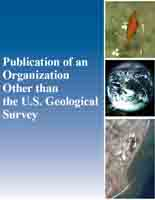Occurrence of a predicted earthquake on the San Andreas fault
Links
- More information: Publisher Index Page (via DOI)
- Download citation as: RIS | Dublin Core
Abstract
In May 1985 we predicted1 that an earthquake would occur on the San Andreas fault near Stone Canyon, California within a year. The prediction was based on the observation of seismic quiescence–defined as a significant decrease in the average occurrence rate of earthquakes within the source volume of the future mainshock. A mainshock of magnitude ML = 4.6 occurred on 31 May 1986, rupturing exactly the specified segment of the fault. This is the first successful prediction of an earthquake along the San Andreas fault, and the probability to have come true by chance is <5%. Although the prediction addressed only a small main-shock, its success was significant because the location, size and occurrence time were correctly specified for an earthquake in a populated area. Larger earthquakes will undoubtedly be successfully predicted by the same method in the future, but the major segments of the San Andreas fault near San Francisco and Los Angeles have such a low-background seismicity rate that the method will probably not be applicable there.
Study Area
| Publication type | Article |
|---|---|
| Publication Subtype | Journal Article |
| Title | Occurrence of a predicted earthquake on the San Andreas fault |
| Series title | Nature |
| DOI | 10.1038/329323a0 |
| Volume | 329 |
| Issue | 6137 |
| Year Published | 1987 |
| Language | English |
| Publisher | Springer Nature |
| Description | 3 p. |
| First page | 323 |
| Last page | 325 |
| Country | United States |
| State | California |
| Other Geospatial | San Andreas fault |


